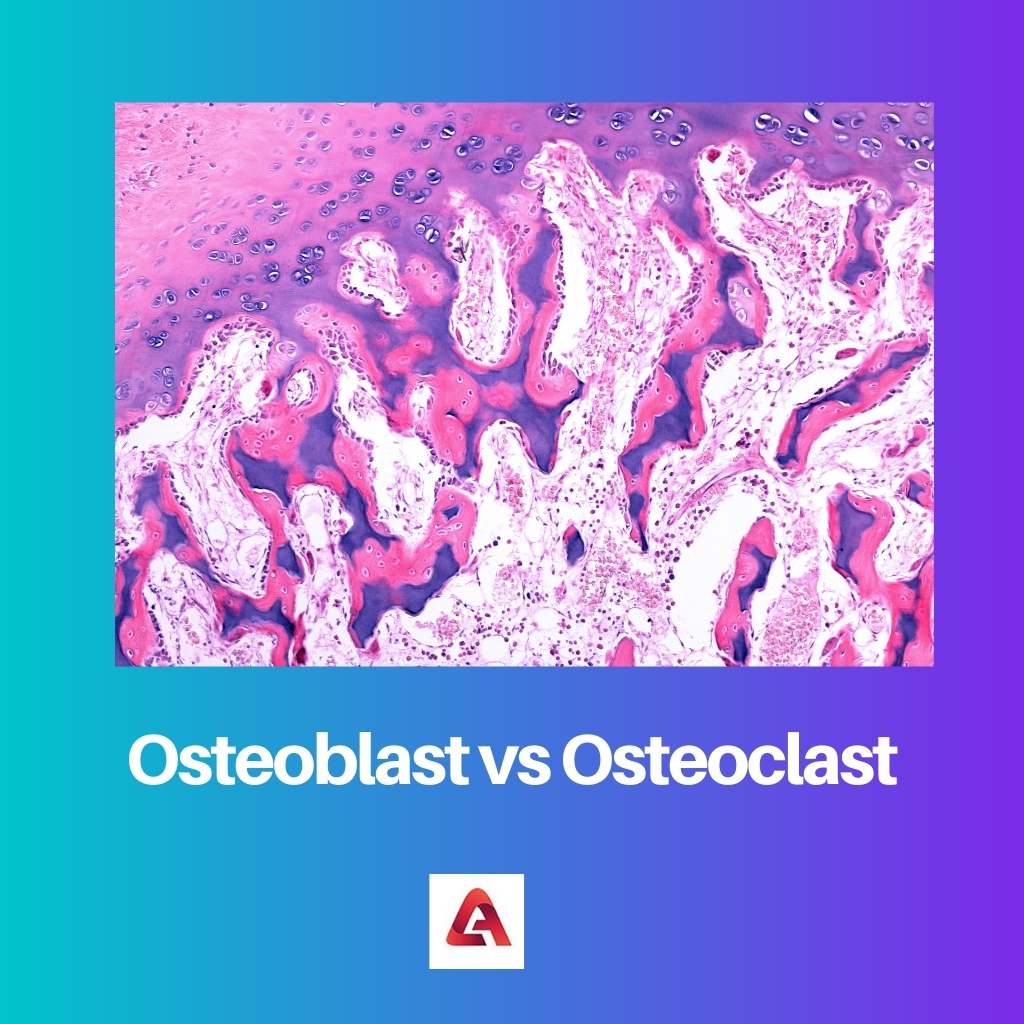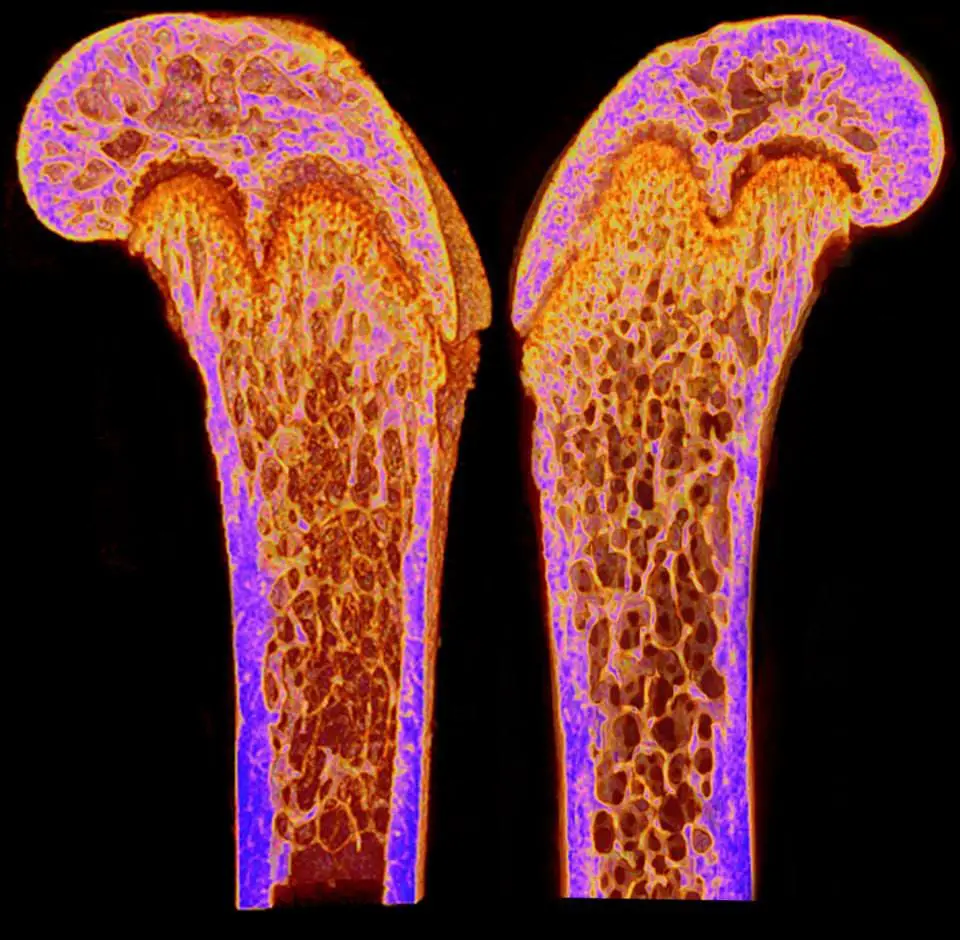All living organisms are made up of cells, which are the basic building components. They are recognized as building blocks as cells are packaged in unobtrusive and easily identifiable ways.
Different types of cells in different parts of the human body have their way of functioning in the process. Osteoblast and Osteoclast are the types of bone cells, but they function differently in the human body.
Key Takeaways
- Osteoblasts are cells responsible for bone formation and mineralization, contributing to bone growth and strength.
- Osteoclasts break down bone tissue, releasing calcium and other minerals into the bloodstream.
- A balance between osteoblast and osteoclast activity is essential for maintaining healthy bone density and structure.
Osteoblast vs Osteoclast
Osteoblasts are bone-forming cells that are responsible for synthesizing and depositing new bone tissue. They produce collagen, a protein that gives bone its strength and flexibility, and other matrix proteins. Osteoclasts are bone-resorbing cells that break down old or damaged bone tissue.

Osteoblasts are the cells that are responsible for bone synthesis and mineralization, both during bone formation and remodelling.
These cells form a tightly packed layer on the bone surface, from which processes radiate from the osteoblast body through the forming bone.
They are bone-forming cells that originate from the bone marrow’s mesenchymal stem cells, which also give rise to chondrocytes, myocytes, and adipocytes.
Osteoclasts are multinucleated cells with particular functions in bone growth and regeneration.
These are specialized cells that form and stick to the bone matrix before secreting acid and lytic enzymes that break down it in a specific extracellular compartment.
They are generated from the monocyte/macrophage hematopoietic lineage. It is a type of bone cell that is responsible for the breakdown of bone tissue.
Comparison Table
| Parameters of Comparison | Osteoblast | Osteoclast |
|---|---|---|
| Definition | These are specialized mesenchymal cells that help the skeleton mineralize by synthesizing bone matrix and coordinating mineralization. | These are multinucleated cells that develop from hematopoietic progenitors in the bone marrow, giving rise to monocytes in the blood. |
| Function | They are mainly responsible for bone production as well as maintaining bone tissue integrity and shape. | It facilitates the resorption of bone. Enhancing their resorptive activity degrades bone to commence normal bone remodeling and bone loss. |
| Size | They are small cells with a diameter of 2050 m and are of various shapes. | They are large cells with a size of 150–200 µm in diameter. |
| Formation | Cells are generated when osteogenic cells develop in the periosteum, a tissue that covers the outer surface of the bone. | These are formed by the fusing of numerous cells originating from circulating monocytes in the blood. |
| Receptors for parathyroid hormone(PTH) | Bone-forming osteoblasts have PTH receptors, which produce substances that drive osteoclast activity. | PTH does not attach to osteoclasts and instead binds to osteoblasts, resulting in indirect stimulation. |
What is Osteoblast?
The cells that generate new bone are known as osteoblasts. They’re also related to structural cells and come from the bone marrow. It consists of only one nucleus in them.
To form bone, osteoblasts function in groups. They make “osteoid” bone, which is made up of bone collagen and other proteins. After that, they keep an eye on calcium and mineral deposition. Mostly they are present on the new bone’s surface.
In a constant cycle that happens throughout life, these cells function in tandem with osteoclasts, which resorb bone.
The specific function of osteoblasts necessitates a large quantity of energy output, especially during the development and remodelling of new bone.
Since they are bone-forming cells, they produce at least three endocrine factors that regulate whole-body metabolism and respond to metabolic hormones.
The cells are in charge of producing huge amounts of collagen, especially type I collagen, which accumulates to build the bone matrix.
When a group of osteoblasts has completed filling in a cavity, the cells flatten and resemble pancakes. Almost they cover the bone’s surface. These ancient osteoblasts can also be termed as lining cells.
Therefore, disruption of osteoblast function disrupts normal bone remodelling, resulting in bone disease. Diseases like osteoporosis can be caused by an imbalance in this tightly connected process.

What is Osteoclast?
The large multinucleated cell that dissolves and absorbs bone is known as an osteoclast.
Bone is a dynamic tissue that is constantly breaking down and reshaping in response to factors such as structural stress and the body’s calcium requirements. The osteoclasts are the agents of continual bone degradation.
They are connected to white blood cells and arise from the bone marrow. Because osteoclasts are made up of two or more cells that fuse, they frequently have more than one nucleus.
They are discovered near the disintegrating bone on the surface of the bone mineral.
Parathyroid Hormone(PTH) levels beyond a certain threshold can activate osteoclasts, causing excessive bone disintegration. The release of PTH is triggered by calcium in the blood.
Hypocalcemia, or a lack of calcium in the blood, can result in elevated PTH levels. It can also induce calcium to be released from bone to ensure that the human body has enough calcium in the blood.
By increasing their resorptive activity, osteoclasts initiate normal bone remodelling and mediate bone loss in pathologic circumstances. They are made up of monocyte precursors that circulate in the bloodstream after forming in the bone marrow.
Osteoporosis, periprosthetic osteolysis, bone tumours, and Paget’s disease are all disorders caused by excessive osteoclast activity. On the other hand, osteoporosis is caused by a lack of osteoclasts.

Main Differences Between Osteoblast and Osteoclast
- Both cells have a different way of functioning. Osteoblasts play a role in bone development and formation, while osteoclasts are cells that help break down bones.
- Pluripotent mesenchymal plant cells give rise to osteoblasts. But, osteoclasts are produced from granulocyte-macrophage lineage hematopoietic cells.
- Osteocytes are cells that are present within the bones. At the end of the bone-building process, osteoblasts transform into osteocytes, whereas osteoclasts do not differentiate into osteocytes.
- Osteoblasts are small and single-nucleated cells, but osteoclasts are large multinucleated cells.
- Osteoblast cells produce an abundant amount of alkaline phosphatase enzyme. And tartrate-resistant acid phosphatase enzyme is produced in significant quantities by osteoclast cells.



